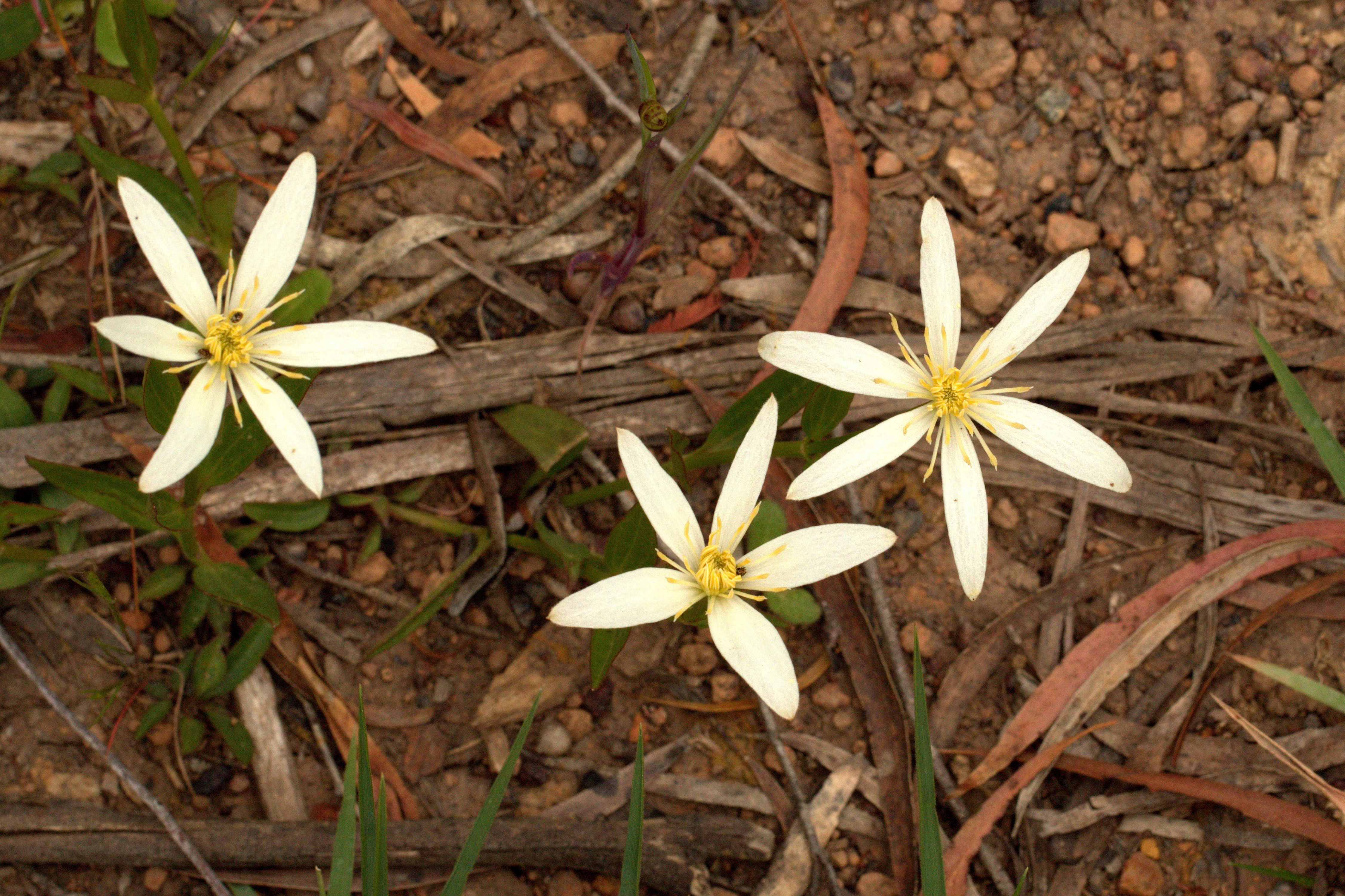Scientific Name: Clematis gentianoides Endemic Having a natural distribution confined to a particular geographic region
Common Name: ground clematis
Family Classification (Clade): Eudicots
Family: Ranunculaceae
Form Description: Small, erect, non-climbing perennial plant. Many short leafy stems close together.
Flowers: Flower has 4–8 white sepals to 6cm across. Solitary (usually) flower at end of branch.
Fruit: Achene – female flowers are followed by feathery seeds.
Municipality
Plant Communities
Habitat Notes
Scattered widely especially in north and east on rocky hillsides.
Site Tolerance
Dry, Exposed, Rocky
Soil Tolerance
Loam, Nutrient-poor, Poorly-drained, Well-drained
General Notes
The only non-climbing species of Clematis in Tasmania.
Propagation Calendar
-
Flowering Month
Jan Feb Mar Apr May Jun Jul Aug Sep Oct Nov Dec -
Seed Collecting Month
Jan Feb Mar Apr May Jun Jul Aug Sep Oct Nov Dec -
Sowing Month
Jan Feb Mar Apr May Jun Jul Aug Sep Oct Nov Dec -
Cutting Month
Jan Feb Mar Apr May Jun Jul Aug Sep Oct Nov Dec
Propagation Method
Seed Information
Seed Collection
Easily grown from seed. Seed turns brown and releases with minimum pressure when ripe. Separate seed from plumes by rubbing.
Seed Treatment Method
Standard Scatter seed thinly on to damp potting mix. Hold seed in place by covering with more potting mix to approximately the depth of the seed size.
Seed Storage Life
6 months
Seed Treatment Notes
Seed should be sown fresh. 90% germination after 1 month but only 40-50% after 6 months.
Germination Time
1-3 months
